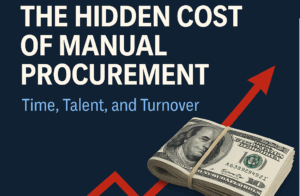Learn how to master the art of demand forecasting and empower yourself to make data-driven decisions and achieve business success!
Forecasting demand is a crucial aspect of effective business planning and supply chain management. Accurate demand forecasting empowers businesses to optimize inventory levels, enhance production efficiency, and meet customer expectations. In this article, we will explore a step-by-step guide to mastering the art of demand forecasting, empowering you to make data-driven decisions and achieve business success.
Step 1: Gather Historical Data
Begin by collecting relevant historical data on past sales, customer orders, and other demand-related information. Look for patterns, seasonality, and any significant events that may have influenced demand in the past. Historical data serves as the foundation for building your forecast.
Step 2: Identify Key Factors
Identify the key factors that influence demand for your products or services. These may include economic indicators, consumer trends, marketing campaigns, industry events, and competitor activities. Understanding these factors will enable you to make more informed and accurate forecasts.
Step 3: Select Forecasting Methods
There are various demand forecasting methods to choose from, each suitable for different scenarios. Common techniques include time-series forecasting (moving averages, exponential smoothing), causal forecasting (regression analysis), and qualitative methods (market research, expert opinions). Choose the appropriate method based on data availability and the complexity of your forecasting needs.
Step 4: Clean and Analyze Data
Cleanse and preprocess your data to remove outliers, errors, and inconsistencies. Analyze the data to gain insights into seasonal trends, cyclical patterns, and any underlying growth or decline trends. This step ensures that your forecasting model is built on accurate and reliable information.
Step 5: Build the Forecasting Model
Utilize the selected forecasting method to build your model. Implement it using software tools, spreadsheets, or specialized demand forecasting software. The model should incorporate historical data, key influencing factors, and any relevant external data sources.
Step 6: Validate and Adjust
Validate your forecasting model using a holdout sample or cross-validation techniques. Compare the forecasted results with actual demand data to evaluate its accuracy. If necessary, adjust the model parameters or consider alternative forecasting methods to improve accuracy.
Step 7: Collaborate and Seek Feedback
Involve cross-functional teams and stakeholders in the demand forecasting process. Collaboration can offer valuable insights and perspectives, improving the quality of your forecasts. Regularly seek feedback from sales, marketing, production, and finance teams to fine-tune your forecasts based on ground-level insights.
Step 8: Monitor and Review
Demand forecasting is an ongoing process. Continuously monitor the performance of your forecasting model and compare forecasted results with actual data. Regularly review the accuracy and adjust your forecasts based on changing market conditions or unforeseen events.
Step 9: Embrace Technology and AI
Leverage advanced technologies like Artificial Intelligence (AI) to enhance your demand forecasting capabilities. AI-driven algorithms can process vast amounts of data, identify complex patterns, and generate more accurate forecasts in real-time.
Mastering the art of demand forecasting is a critical skill for businesses seeking to stay competitive and responsive in today’s dynamic marketplace. By gathering historical data, identifying key factors, and selecting appropriate forecasting methods, you can build reliable and accurate models. Regularly validate, adjust, and seek collaboration to fine-tune your forecasts and make data-driven decisions. Embrace technology and AI to take your demand forecasting to the next level. With these steps, you’ll be well-equipped to navigate demand fluctuations and achieve business success.
The Perfect Planner Team is here if you have any questions about demand forecasting, and we offer a free consultation service. If you would like to connect with us on this article or any other topic, please message us on LinkedIn, shoot us an email at info@perfectplanner.io, visit our website at www.perfectplanner.io, or give us a call at 423.458.2979.
Author: Thomas Beil
Publication Date: August 14, 2023
© Copyright 2023 Perfect Planner LLC. All rights reserved.






